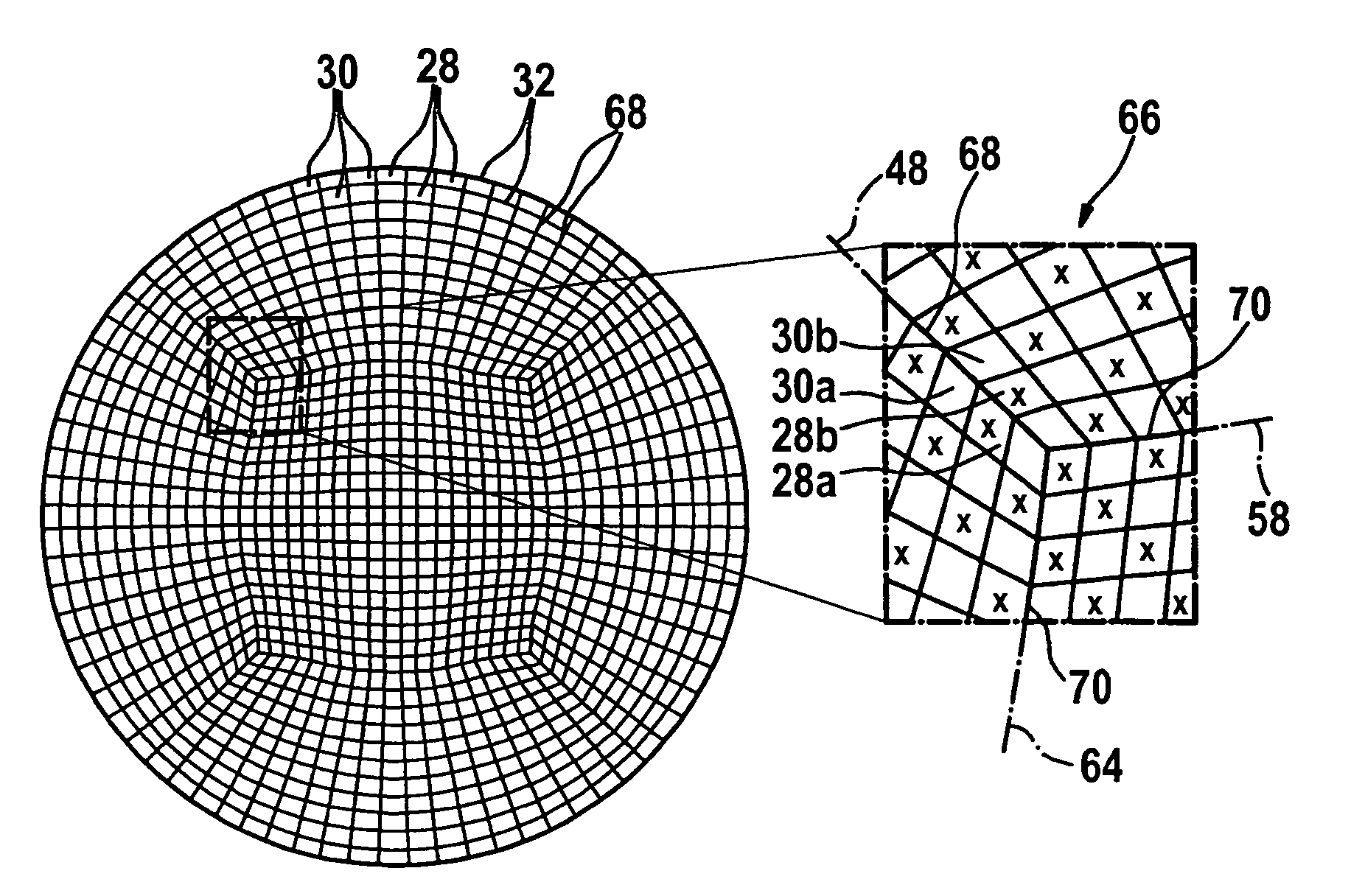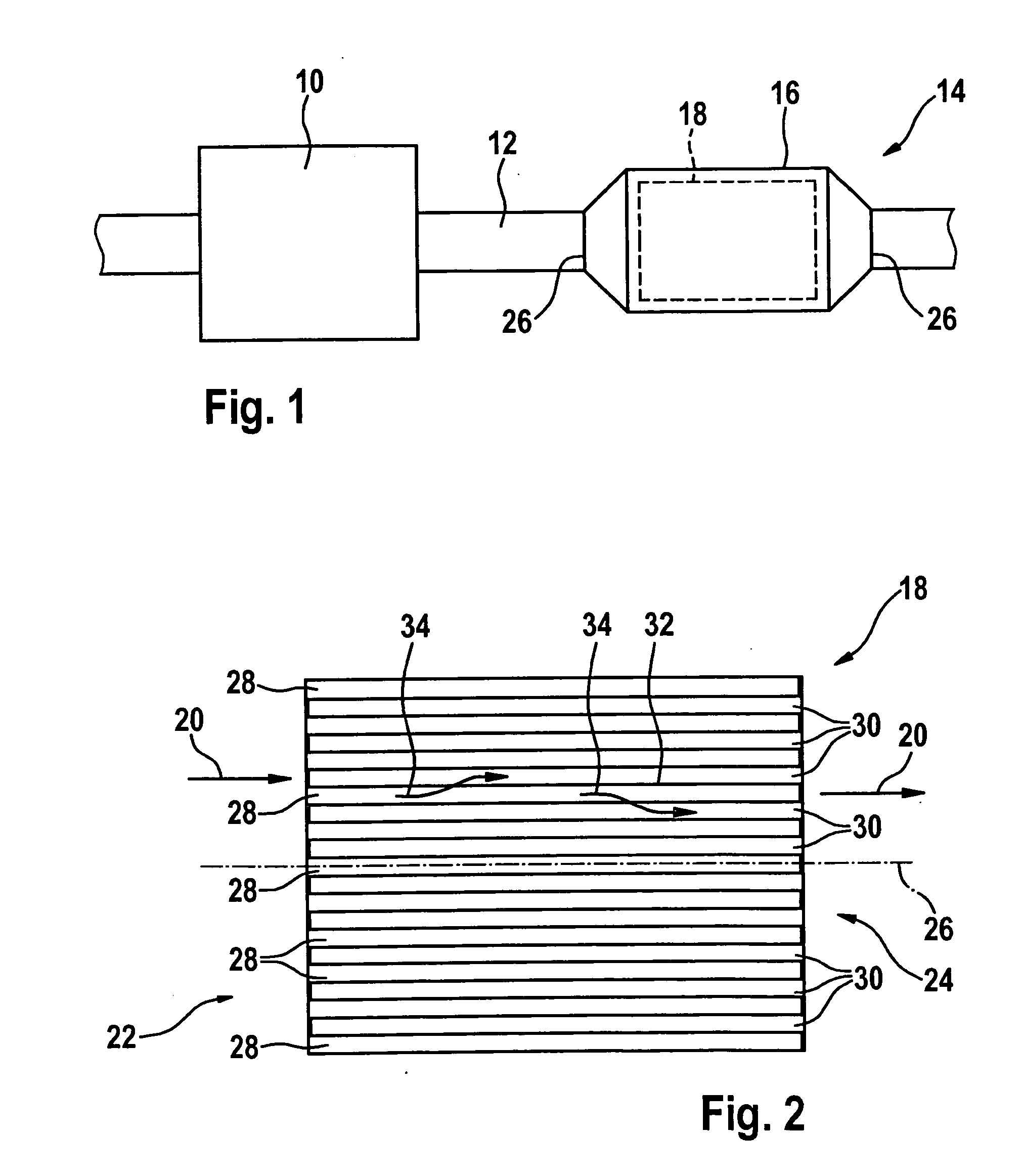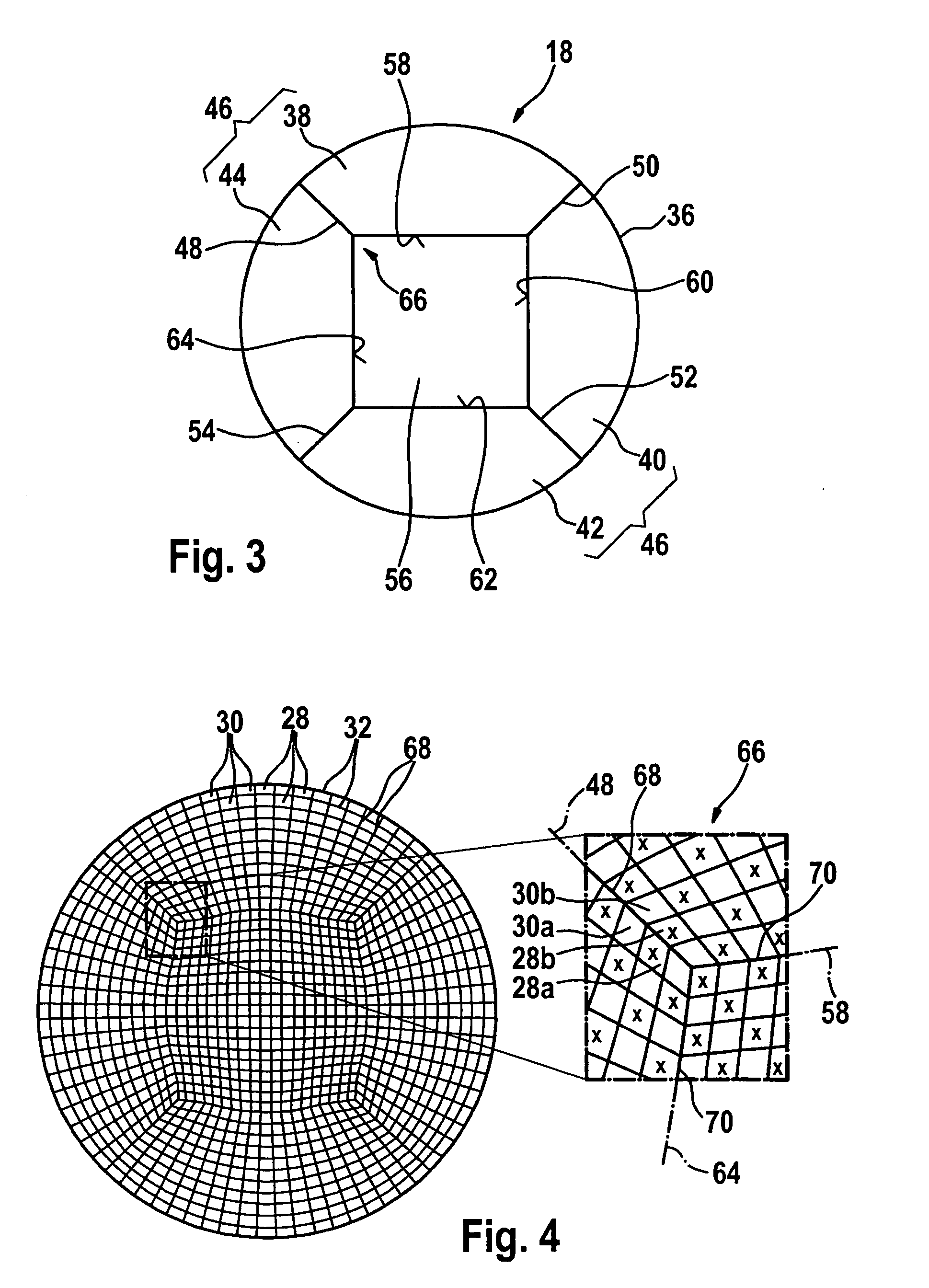Filter element, especially for filtering the exhaust gases of an internal combustion engine
a filter element and internal combustion engine technology, applied in auxillary pretreatment, ceramicware, separation processes, etc., can solve the problems of large mechanical stress, increase in pressure drop, and decrease in permeability of filter walls, so as to achieve large tensile stress, easy to absorb, and reduce the effect of permeability
- Summary
- Abstract
- Description
- Claims
- Application Information
AI Technical Summary
Benefits of technology
Problems solved by technology
Method used
Image
Examples
Embodiment Construction
[0022]In FIG. 1, an internal combustion engine bears the reference character 10. Exhaust gases are directed through an exhaust pipe 12 to an emissions control system 14. The latter encompasses a particle filter 16 with which carbon particles are filtered out of the exhaust gas flowing in exhaust pipe 12. This is necessary especially in diesel internal combustion engines in order to comply with regulatory stipulations.
[0023]Particle filter 16 encompasses a filter element 18 that is substantially cylindrical in its entirety.
[0024]FIG. 2 depicts filter element 18 in a longitudinal section. Filter element 18 can be manufactured, for example as an extruded shaped member, from a ceramic material such as, for example, cordierite.
[0025]Exhaust gas of internal combustion engine 10 flows through filter element 18 in the direction of arrows 20. In FIG. 2 an entrance surface for the exhaust gas to be filtered carries the reference character 22, and an exit surface for filtered exhaust gas carri...
PUM
| Property | Measurement | Unit |
|---|---|---|
| angle | aaaaa | aaaaa |
| angle | aaaaa | aaaaa |
| angle | aaaaa | aaaaa |
Abstract
Description
Claims
Application Information
 Login to View More
Login to View More - R&D
- Intellectual Property
- Life Sciences
- Materials
- Tech Scout
- Unparalleled Data Quality
- Higher Quality Content
- 60% Fewer Hallucinations
Browse by: Latest US Patents, China's latest patents, Technical Efficacy Thesaurus, Application Domain, Technology Topic, Popular Technical Reports.
© 2025 PatSnap. All rights reserved.Legal|Privacy policy|Modern Slavery Act Transparency Statement|Sitemap|About US| Contact US: help@patsnap.com



